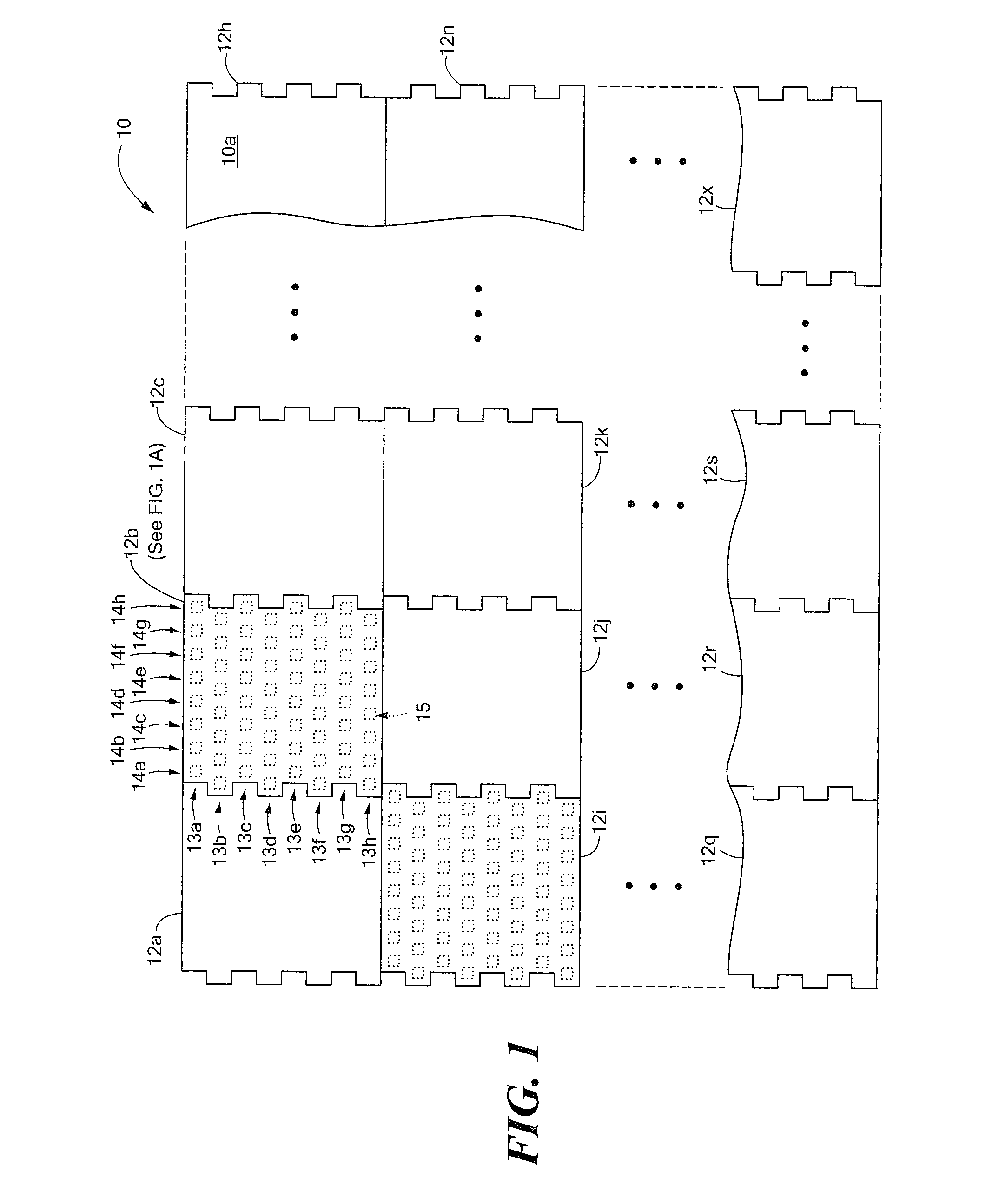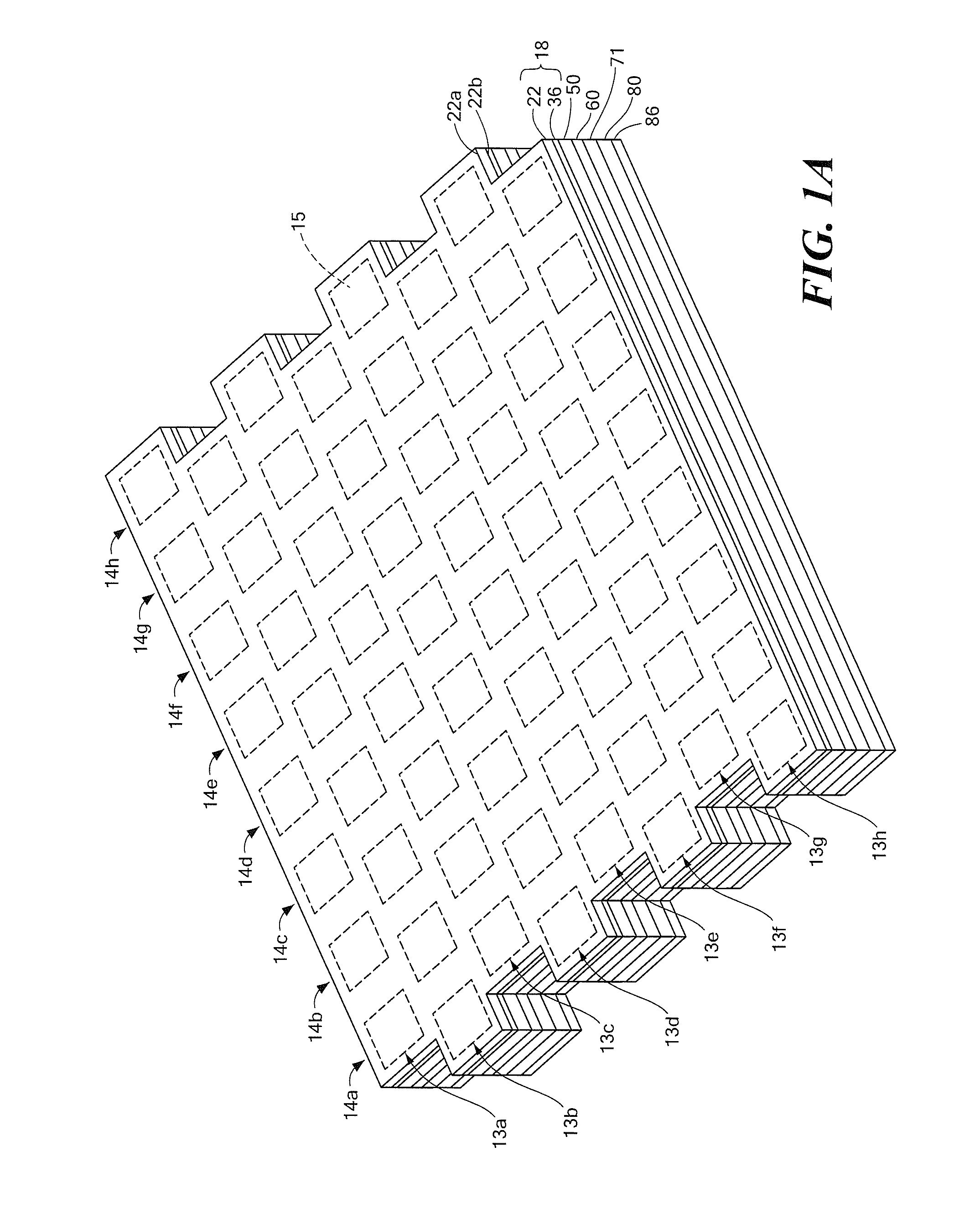Panel array
a phased array and antenna technology, applied in the direction of resonant antennas, resonant array feeding systems, radiating element structural forms, etc., can solve the problems of increasing cost, degrading rf performance, increasing polarization diversity and reliability requirements of such systems, and reducing insertion loss, so as to reduce the manufacturing cost of back drill and back fill operations, the effect of improving rf performan
- Summary
- Abstract
- Description
- Claims
- Application Information
AI Technical Summary
Benefits of technology
Problems solved by technology
Method used
Image
Examples
Embodiment Construction
[0076]Before describing the various embodiments of the invention, some introductory concepts and terminology are explained. A “panel array” (or more simply “panel) refers to a multilayer printed wiring board (PWB) which includes an array of antenna elements (or more simply “radiating elements” or “radiators”), as well as RF, logic and DC distribution circuits in one highly integrated PWB. A panel is also sometimes referred to herein as a tile array (or more simply, a “tile”).
[0077]An array antenna may be provided from a single panel (or tile) or from a plurality of panels. In the case where an array antenna is provided from a plurality of panels, a single one of the plurality of panels is sometimes referred to herein as a “panel sub-array” (or a “tile sub-array”).
[0078]Reference is sometimes made herein to an array antenna having a particular number of panels. It should of course, be appreciated that an array antenna may be comprised of any number of panels and that one of ordinary ...
PUM
| Property | Measurement | Unit |
|---|---|---|
| thick | aaaaa | aaaaa |
| frequencies | aaaaa | aaaaa |
| frequency | aaaaa | aaaaa |
Abstract
Description
Claims
Application Information
 Login to View More
Login to View More - R&D
- Intellectual Property
- Life Sciences
- Materials
- Tech Scout
- Unparalleled Data Quality
- Higher Quality Content
- 60% Fewer Hallucinations
Browse by: Latest US Patents, China's latest patents, Technical Efficacy Thesaurus, Application Domain, Technology Topic, Popular Technical Reports.
© 2025 PatSnap. All rights reserved.Legal|Privacy policy|Modern Slavery Act Transparency Statement|Sitemap|About US| Contact US: help@patsnap.com



